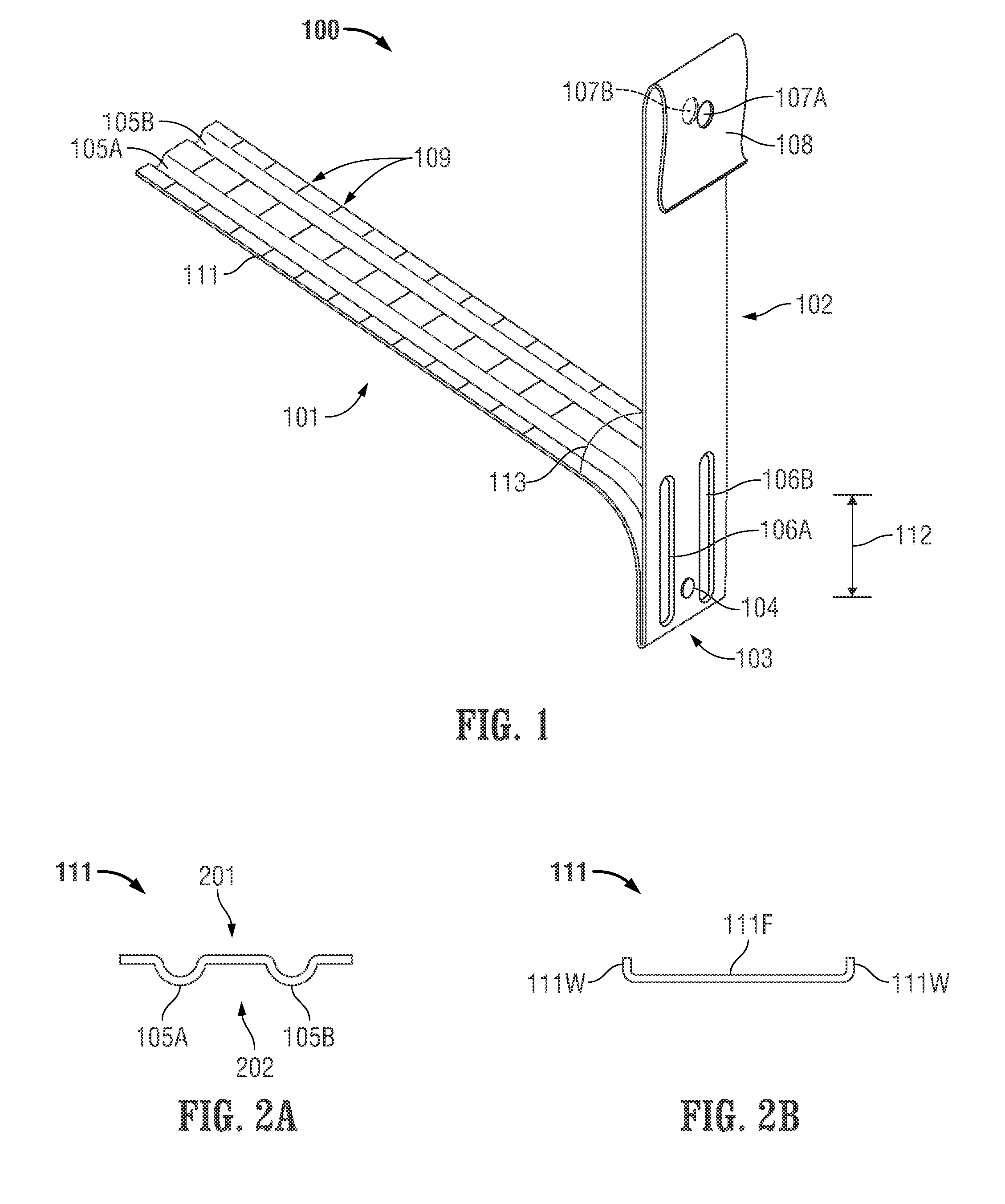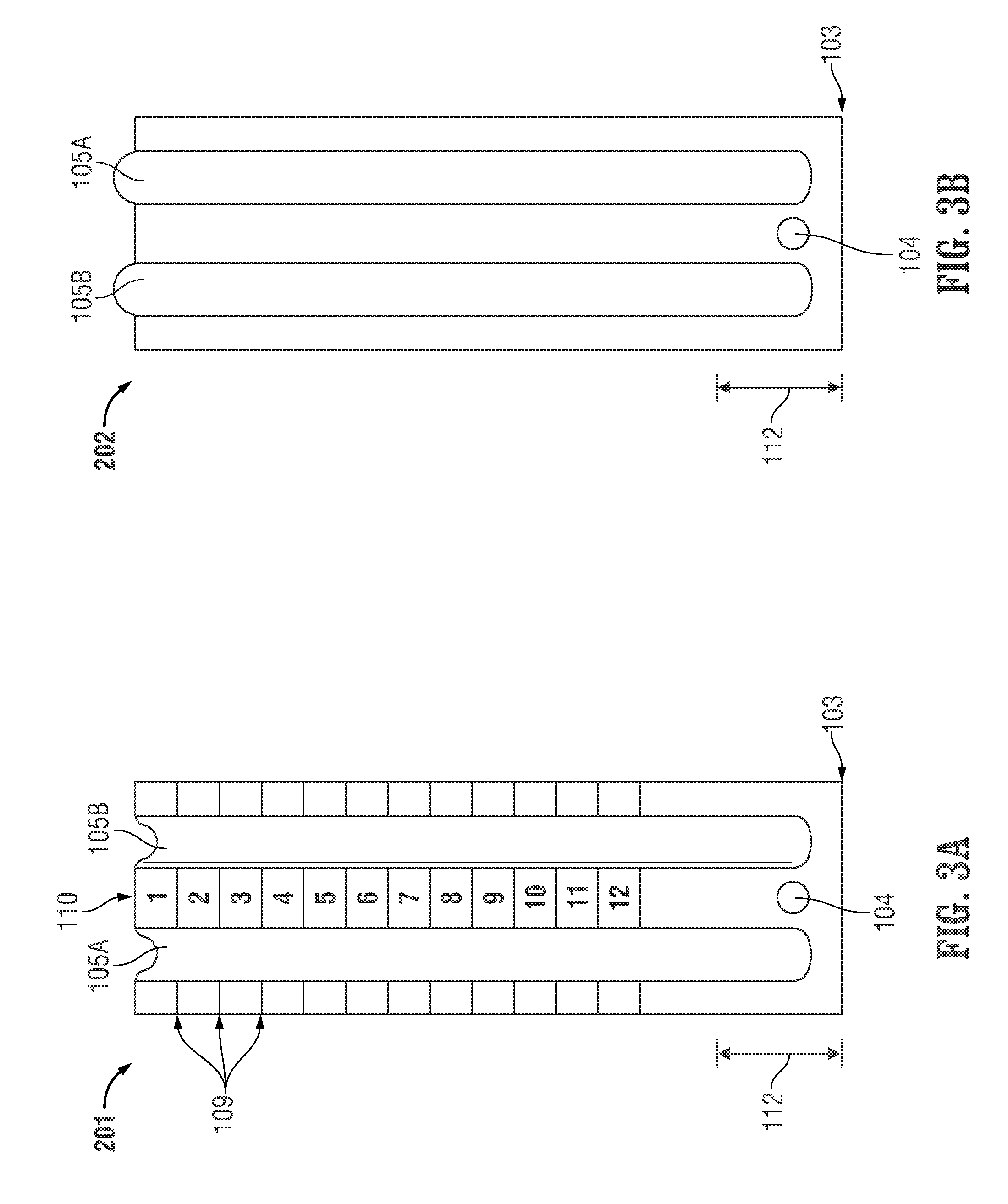Gutter Wedge
a wedge and gutter technology, applied in the field of gutters, can solve the problems of gutters that are not effective when they are most needed, and deformation persist, so as to achieve the effect of improving performance, adding strength and stability
- Summary
- Abstract
- Description
- Claims
- Application Information
AI Technical Summary
Benefits of technology
Problems solved by technology
Method used
Image
Examples
Embodiment Construction
[0017]This disclosure can be understood in the context of the following example. However, what follows is merely an example and is not intended to define the scope of this patent, which is defined by the claims.
[0018]FIG. 1 illustrates the profile of an embodiment of a gutter wedge with improved performance 100 (also known as a Gutter Bumper™). Gutter wedge 100 is generally comprised of elastic materials which may include, but are not limited to, steel, spring steel, steel alloys, aluminum, copper or plastics of a variety of types. Element 101 is the support member of gutter wedge 100 and is the portion that generally spans the gap between the rain gutter and the corresponding roof fascia. Attachment member 102 is generally parallel with the roof-facing side of a rain gutter. Support member 101 and attachment member 102 may be part of a single sheet that has been folded. Alternatively, multiple sheets of metal can be combined to form gutter wedge 100.
[0019]The embodiment shown in FI...
PUM
 Login to View More
Login to View More Abstract
Description
Claims
Application Information
 Login to View More
Login to View More - R&D
- Intellectual Property
- Life Sciences
- Materials
- Tech Scout
- Unparalleled Data Quality
- Higher Quality Content
- 60% Fewer Hallucinations
Browse by: Latest US Patents, China's latest patents, Technical Efficacy Thesaurus, Application Domain, Technology Topic, Popular Technical Reports.
© 2025 PatSnap. All rights reserved.Legal|Privacy policy|Modern Slavery Act Transparency Statement|Sitemap|About US| Contact US: help@patsnap.com



